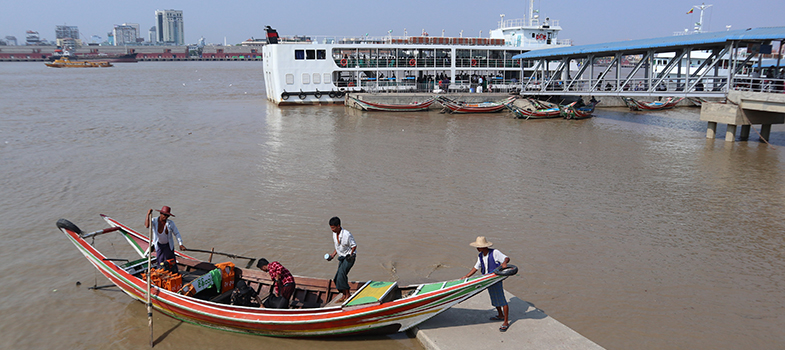3.2 What is water pollution?
Water pollution is any change in the physical, chemical or biological properties of water that will have a detrimental consequence on any living organism. Contamination of water bodies happens both naturally and by human activity.
Water pollution happens naturally when naturally occurring chemicals, dissolved in water, change in concentration (such as sodium, chloride or sulphate). This is called the sediment cycle, which starts with the process of erosion, whereby particles or fragments are weathered from rock material followed by the erosion of minerals, their transport and deposition, then burial. Action by water, wind, glaciers, and plant and animal activities all contribute to the erosion of the earth's surface. Fluvial sediment is the term used to describe the case where water is the key agent for erosion.
Changes in geology, the closeness to the sea, and the progress of water downstream from headwaters can all give rise to natural forms of chemical pollution. For example, Myanmar’s groundwater near the coast is saline, and inland it is contaminated by naturally occurring arsenic that harms living organisms.
Sediment plays a major role in the transport and fate of pollutants. Toxic chemicals can become attached or absorbed by sediment particles and then transported and deposited in other areas. These pollutants may later be released into the environment. Furthermore, contaminants accumulate over long periods of time in the sediments. Some toxic substances that may reside in the sediment (e.g. mercury) can re-enter the water system when the sediments are dredged.
But as well as natural forms of water pollution, human activity adds contaminants to water courses that more substantially disrupt normal environmental processes as the following two case studies demonstrate.
Mandalay Industrial Zone (MIZ)
The MIZ area includes facilities that cause severe pollution such as tanneries, distilleries, sugar factories and battery factories.
Since 2008, if not earlier, untreated wastewater has been released from the MIZ into a canal that supplies water for the Nat Yay Kan fishery ponds and feeds into Taungthaman Lake. This pollution has caused a series of large die-offs in the fish populations in Taungthaman Lake.
In 2013, Myanmar’s Ministry of Industry supplied a list of 63 factories that were dumping wastewater into surrounding waterways, though the total number may be far higher. Several factories have been fined but none has agreed to stop dumping pollutants, despite the fact that the Mandalay City Development Committee is legally obligated to ensure that they do so.
Though required to do so by law, none of the factories in MIZ have publicised an Environmental Management Plan or an Environmental Compliance Certificate.
(Source: Earth Rights International (2019) Pollution in Myanmar [Tip: hold Ctrl and click a link to open it in a new tab. (Hide tip)] .)
Question 1
Fines have not worked in stopping companies releasing untreated industrial wastewater into the canal that supplies the Nat Yay Kan fishery ponds. The Mandalay City Development Committee has responsibility to stop the contamination.
Imagine you are a member of the Committee faced with the following options to improve factory compliance with the law.
In which order would you use each option?
Tip: perhaps start softly (number 1), moving towards harder options (number 5) if the companies still do not comply.
Using the following two lists, match each numbered item with the correct letter.
Visit the factories and explain the law
Mediate a solution between the factories and Nat Yay Kan fishery ponds
Highlight the problem through the media
Raise fines to make them more of a deterrent
Prosecute the companies
a.1 (soft option)
b.4
c.5 (hard option)
d.3
e.2
- 1 = a
- 2 = e
- 3 = d
- 4 = b
- 5 = c
Answer
This is a model answer, there is no right or wrong answer. However, this model answer represents one strategy that emphasizes dialogue and building understanding among the different stakeholders (a person, group or organization with an interest or concern in something), and only as a last resort moves to more punitive measures.
3.1 Introduction
